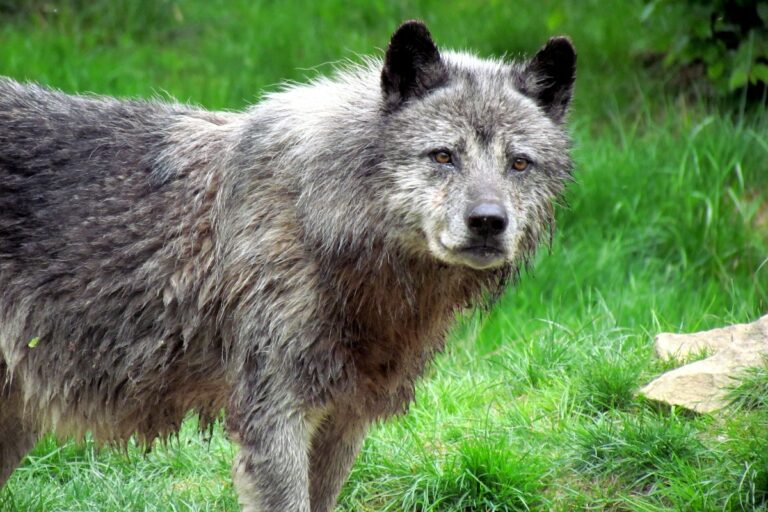Wildlife conservation is vital in safeguarding the planet’s biodiversity and ecological balance. Among the remarkable creatures deserving protection is the largest wolf species, Canis lupus. As apex predators, they are essential for maintaining ecosystem health. However, these majestic beings face numerous challenges, from habitat loss to human-wildlife conflict. This article will delve into the critical conservation efforts to preserve these magnificent wolves. Explore the challenges they confront and the tireless endeavors taken to ensure their survival for generations to come.
The Largest Wolf Species: An Introduction

The world’s largest wolf species, often hailed as the largest wolf in the world, encompasses a diverse group of majestic creatures. Among them, the gray wolf (Canis lupus) stands out, renowned for its intelligence and adaptability. Another fascinating example is the Himalayan wolf (Canis lupus chanco), gracefully thriving in the rugged terrains of the Himalayas. These magnificent creatures once roamed vast territories, occupying diverse habitats, from forests to tundras.
However, their populations have declined due to habitat loss and human-wildlife conflicts. Understanding the challenges and embracing concerted conservation efforts is crucial to ensure the survival of the largest wolves in the world for future generations.
Conservation Challenges for the Largest Wolf Species
The Largest Wolf Species faces formidable conservation challenges, imperiling their survival. Habitat loss and fragmentation encroach upon their territories, while human-wildlife conflicts and poaching exacerbate the threats. Climate change further disrupts their habitats, compounding the situation.
Startling statistics reveal a disheartening reality, with one-third of their population wiped out. Urgent action is imperative to halt this decline and protect these magnificent creatures from extinction. Through concerted efforts and global cooperation, people can strive to safeguard the future of the Largest Wolf Species and maintain the delicate ecological balance they contribute to.
Efforts and Initiatives for Conservation

Dedicated efforts and initiatives by organizations and governments play a pivotal role in safeguarding the largest wolf species. Habitat restoration projects and the creation of protected areas provide vital sanctuaries for these majestic creatures. Stricter policies and regulations against wildlife exploitation strengthen their protection. Community-based conservation programs foster local engagement and awareness.
Across various regions, you can witness success stories of these endeavors: from thriving wolf populations in carefully managed reserves to collaborative efforts yielding positive results. By combining resources, expertise, and determination, these conservation initiatives offer hope for a brighter future, ensuring the coexistence of humans and the largest wolf species.
Advances in Technology for Conservation
Technological advancements have revolutionized conservation efforts for the Largest Wolf Species. GPS collars and satellite tracking enable precise monitoring of wolf populations and their movements, providing crucial data for research and management. Drones and remote sensing technologies aid in conducting aerial surveys and assessing inaccessible habitats, enhancing conservation research efficiency. DNA analysis has revolutionized genetic studies, enabling scientists to understand population dynamics and genetic diversity. These cutting-edge tools empower conservationists with accurate information, enabling them to make informed decisions for protecting and preserving these magnificent creatures.
Challenges in Conservation Management
Conservation management poses significant challenges in balancing human interests and the needs of the largest wolf species. Conflicts with livestock require effective mitigation strategies. Cross-border conservation efforts demand international cooperation and coordination. Raising public awareness and education about the vital role of wolves in ecosystems is essential for garnering support and fostering sustainable coexistence. Addressing these challenges is crucial for ensuring the long-term survival of these majestic creatures and maintaining ecological harmony.
Case Studies of Successful Conservation Projects
One remarkable case study involves the Yellowstone Wolf Reintroduction Project. Successfully reintroduced in 1995, gray wolves flourished, stabilizing ecosystems and controlling prey populations. The project exemplifies the positive impact of conservation efforts on wolf populations and biodiversity. Valuable lessons, like the importance of stakeholder collaboration and adaptive management, can be replicated in other regions facing similar challenges. Sharing knowledge and strategies can enhance conservation initiatives worldwide, inspiring hope for the sustained protection of the wolf species and the environments they inhabit.
Collaborative Efforts in International Conservation
International conservation collaborations play a vital role in protecting the wolf species. Notably, the cooperation between countries in North America led to the successful recovery of gray wolves. Such efforts showcase the power of joint initiatives for wolf protection and biodiversity conservation. Global cooperation is crucial for safeguarding migratory wolf populations, as these magnificent creatures traverse vast regions, crossing international borders. By uniting efforts and sharing knowledge, nations can collectively address challenges and ensure a brighter future for the world’s wolves.
Public Engagement and Advocacy for Wolf Conservation
Public engagement is critical in supporting wolf conservation. Advocacy efforts by citizens and organizations are instrumental in pushing for policy changes and stronger conservation measures. By raising awareness about the importance of wolves in ecosystems, the public can foster understanding and empathy toward these creatures.
Eco-tourism can also play a positive role, generating funds for conservation projects and demonstrating the economic value of protecting wolves. Empowering individuals to become advocates for wolf conservation ensures broader support and collective action for the preservation of the largest wolf species.
Future Perspectives on Wolf Conservation

Future perspectives on wolf conservation involve addressing potential threats like habitat loss, climate change, and human-wildlife conflicts. Technology, such as AI, drones, and advanced tracking, will revolutionize monitoring and protection strategies. Ongoing research is vital for understanding wolf behavior, genetics, and population dynamics, informing adaptive management.
Collaborative efforts, public support, and international cooperation will be essential to ensure the sustained survival and coexistence of the wolf species in the changing world. Embracing innovation and knowledge-driven approaches will be vital to securing a brighter future for these majestic creatures and their ecosystems.
The largest wolf species confronts significant conservation challenges, from habitat loss to human-wildlife conflicts. To safeguard their existence and ecological significance, continued efforts are essential. With public support and collaborative initiatives, anyone can ensure a promising future for these magnificent creatures, preserving the delicate balance of the planet’s ecosystems.




